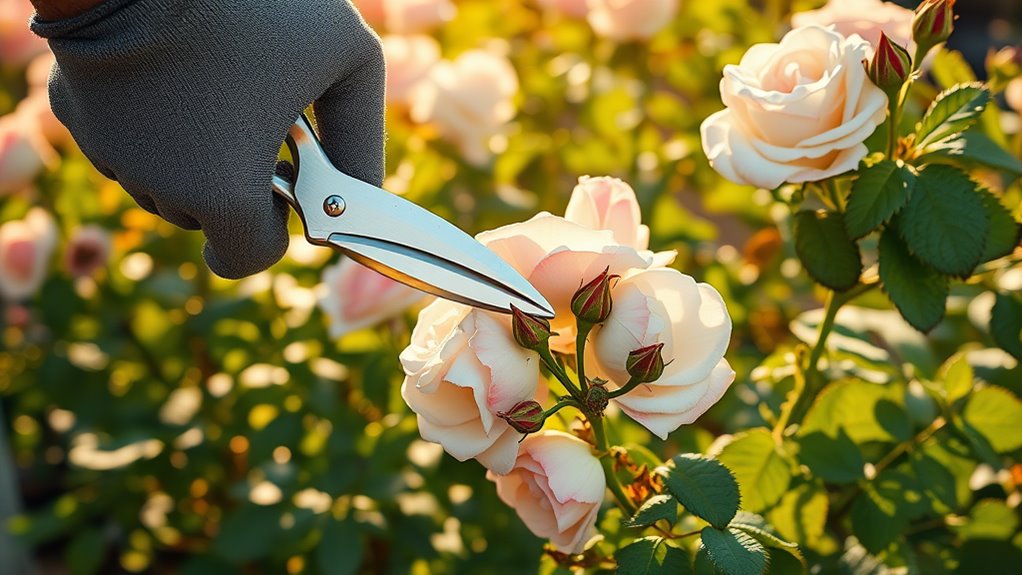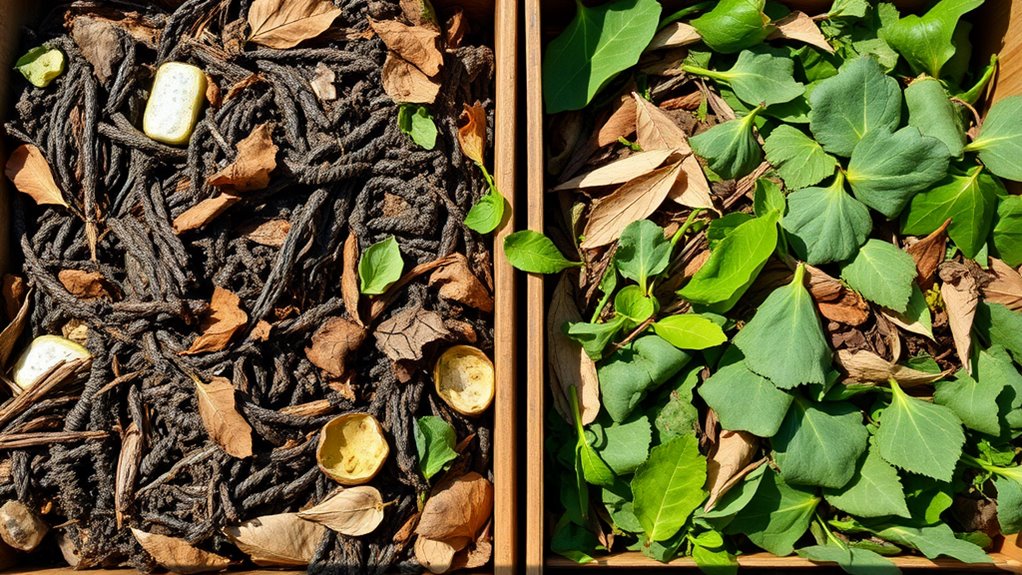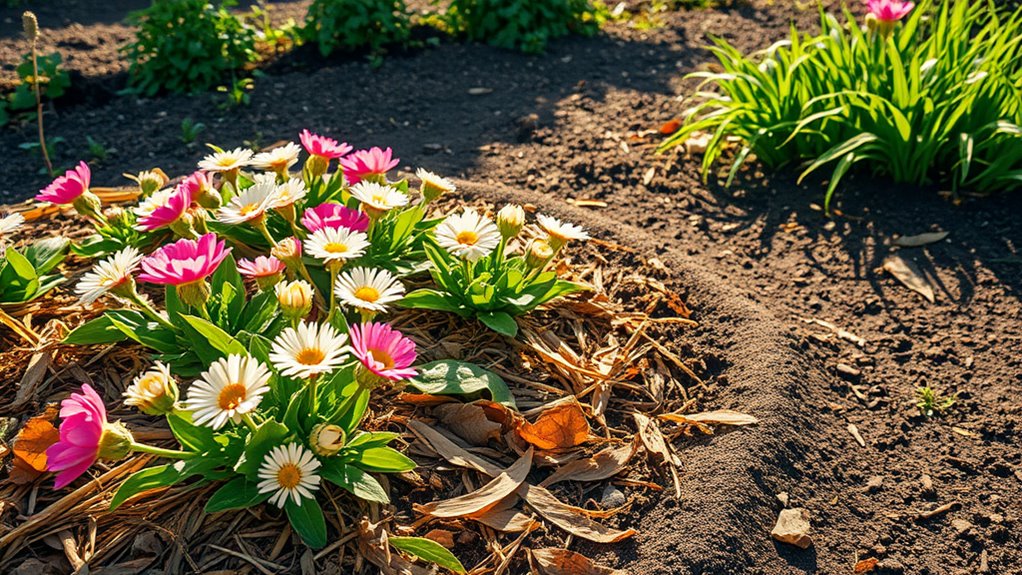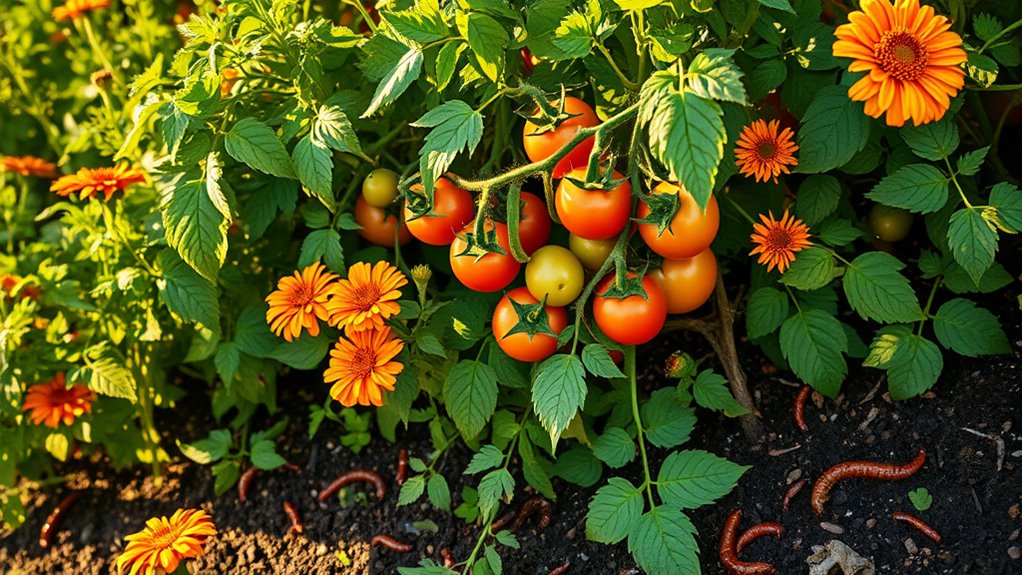You’re Probably Pruning Your Plants at the Wrong Time
You’re probably pruning your plants at the wrong time, which can stress them and cut yields by up to 50%, like with tomatoes. Tailor your schedule to plant types—annuals need precise timing, while perennials thrive on seasonal cuts, such as spring for new growth or fall for dormancy. Avoid common errors like pruning during peak seasons or in bad weather. Master tools and recovery tactics, and you’ll uncover more ways to boost your garden’s vitality.
Key Takeaways
- Prune plants at the optimal time to minimize stress and promote healthy, vigorous growth.
- Tailor pruning schedules to plant types, such as pruning annuals early to maximize their growth cycle.
- Perform spring pruning to remove dead growth and encourage new shoots in woody plants.
- Avoid summer pruning during peak growth to prevent plant stress and disease risks.
- Use clean, sharp tools and monitor regrowth to ensure effective recovery and long-term plant health.
Why Timing Matters for Plant Health
When you prune your plants at the right time, you’re setting them up for optimal health and vigorous growth. Proper timing minimizes stress, allowing wounds to heal quickly and reducing disease risk. Avoiding pruning myths is essential to steer clear of common errors that could harm your plants.
Follow these pruning tips: prune during dormancy for woody plants to avoid sap loss, and cut in early spring for perennials to stimulate blooms.
You’ll enhance air circulation and sunlight exposure, preventing pests and promoting stronger branches. Always check for new growth signs before cutting, ensuring you boost vitality without harming the plant’s natural cycle.
Timing is key to thriving gardens.
Incorporating expert insights from pruning practices can further refine your techniques for even better results.
Understanding Different Plant Types and Pruning Schedules
As you manage your plants, you’ll find that timing for annual plants is crucial to maximize their growth before they die off each season.
For perennials, establishing a consistent pruning schedule ensures they thrive year after year with minimal effort.
Knowing these differences lets you tailor your approach to keep your garden in top shape.
By following a straightforward methodology, gardeners can effectively enhance their skills as outlined in comprehensive guides.
Additionally, incorporating essential pruning techniques can significantly enhance the growth rate of your garden plants.
Annual Plants Timing
Annual plants, which complete their life cycle in one season, demand precise pruning timing to boost growth and blooms. You need to prune them early in the growing season, like spring, to encourage bushier growth and more flowers.
For example, pinch back the tips of young annuals such as petunias or marigolds; this stimulates branching without harming the plant. Avoid pruning too late, as it can divert energy from flowering.
Use sharp, clean shears for quick cuts, minimizing stress and promoting healthier plants throughout their short life. Timing is key—check your local climate for best results.
Perennial Pruning Schedules
Perennials, which live for multiple years, demand tailored pruning schedules to sustain their health and promote vibrant growth. You must identify your plant’s type—such as herbaceous ones that die back annually or woody shrubs that persist.
For herbaceous perennials, prune after flowering or in late fall to encourage new growth. Woody types, like roses, benefit from spring pruning to remove dead wood and shape them.
Always check for signs of disease before cutting; this ensures you avoid stressing plants. Time your efforts with the plant’s bloom cycle for optimal results, enhancing vigor and blooms next season.
Seasonal Pruning Tips for Optimal Growth
When you prune your plants at the right times of the year, you’ll promote healthier growth and vibrant blooms. Proper seasonal timing prevents stress and boosts vitality, ensuring your garden thrives. In fact, for tomato plants, timely pruning can result in a 50% yield increase.
To optimize your pruning routine, follow these key tips:
-
Spring: Prune early to remove dead growth and encourage new shoots, setting the stage for robust development.
-
Summer: Lightly trim flowering plants to maintain shape and promote additional blooms, enhancing overall aesthetics.
-
Fall: Cut back perennials to prepare for dormancy, reducing disease risk and supporting stronger comebacks next season.
By adopting a specific pruning habit, you can transform your gardening experience and achieve healthier, more abundant plants.
Signs That Indicate It’s Time to Prune
Recognizing the right signs ensures you prune your plants effectively, keeping them healthy and vigorous. You’ll spot indicators like dead branches, which signal decay and sap energy, or overcrowded growth that blocks light and air. Watch for yellowing leaves suggesting disease, and pest infestations that threaten vitality. Timely action prevents issues. Additionally, incorporating deadheading can help maximize blooms for prolonged flowering. For even better plant maintenance, try incorporating a weekly deadheading session to keep your flowers vibrant and encourage new growth.
| Sign | Description | Action |
|---|---|---|
| Dead branches | No longer productive; waste plant energy. | Cut back to healthy wood. |
| Overgrown foliage | Reduces light and air circulation. | Thin to improve airflow. |
| Yellowing leaves | Indicates potential disease or stress. | Remove affected sections. |
| Pest signs (e.g., webs) | Attracts more pests and spreads issues. | Prune infested areas now. |
Common Mistakes in Pruning Timing
While enthusiasm for plant care is common, you might inadvertently harm your plants by pruning at the wrong times, such as during active growth periods or extreme weather, which can lead to stress, disease, or poor recovery.
To avoid these pitfalls, here’s what you should watch out for:
-
Pruning during peak growth: You cut off new shoots, weakening the plant and inviting pests.
-
Timing cuts in extreme weather: You expose wounds that can’t heal, causing frost damage or sunburn.
-
Delaying until late season: You miss the window for recovery, resulting in poor blooming or growth next year.
Pruning Techniques for Flowering Plants
Flowering plants thrive with the right pruning techniques, which help you promote vigorous growth and abundant blooms. You’ll want to use methods like pinching for bushier growth or deadheading to extend flowering. Always use clean, sharp tools to prevent damage. Incorporating expert deadheading techniques can enhance the health and vibrancy of your flowers for bigger and more abundant blooms. Here’s a quick guide to get you started:
| Technique | Description |
|---|---|
| Pinching | Remove stem tips to encourage branching and more flowers. |
| Deadheading | Cut off faded blooms to stimulate new growth. |
| Thinning | Eliminate crowded branches for better light penetration. |
| Shaping | Prune selectively to maintain plant form and health. |
Best Practices for Fruit Trees and Bushes
When you’re pruning fruit trees and bushes, start by timing your cuts to the right seasons, like late winter for optimal growth.
This ensures you encourage healthy fruit production without stressing the plants.
Next, apply targeted techniques for bushes, such as selectively removing older stems to enhance airflow and boost yields.
Pruning Timing
Understanding the right timing for pruning your fruit trees and bushes is key to promoting healthy growth and bountiful yields.
Timing directly impacts fruit production and plant vigor, so choose wisely based on the plant’s lifecycle.
To get it right, follow these steps:
-
Prune dormant fruit trees in late winter or early spring before buds swell, minimizing disease risk and encouraging strong growth.
-
Schedule bush pruning post-harvest for summer-fruiting varieties, allowing energy for next season’s blooms.
-
Avoid peak growth periods like summer, as it can stress plants and reduce yields—always align with your local climate.
Techniques for Bushes
Master effective pruning techniques for bushes to boost your fruit yields and maintain plant health.
You’ll start by identifying dead or diseased branches and removing them with clean, sharp shears to prevent disease spread.
For fruit bushes like raspberries, thin out crowded canes in late winter, leaving only the strongest ones for better air flow and sunlight exposure.
Shape your bushes by cutting back long shoots to encourage bushier growth, but avoid over-pruning to prevent stress.
Always angle cuts away from buds to promote healing, and monitor for regrowth to ensure optimal fruit production.
Tools and Preparation for Effective Pruning
To prune your plants effectively, you’ll need the right tools and careful preparation to minimize damage and promote healthy growth.
-
Select the right tools: Choose sharp pruning shears for small branches, loppers for medium-sized ones up to 2 inches thick, and a pruning saw for larger limbs to make clean, precise cuts that heal quickly. For optimal results, consider incorporating the three essential gardening tools that enhance efficiency and productivity in your overall garden setup.
-
Prepare your tools: Clean them with rubbing alcohol to prevent disease spread, sharpen blades for effortless use, and wear gloves and eye protection for safety.
-
Plan your approach: Inspect plants for dead or diseased areas, research optimal timing based on species, and sketch a simple outline of the desired shape to guide your work.
Remember that among the top five must-have gardening tools, pruning equipment is essential for maintaining a successful garden.
Recovery Strategies for Over-Pruned Plants
If you’ve over-pruned your plants, start by assessing the damage to gauge its extent and identify affected areas.
Then, focus on encouraging new growth with targeted watering and light adjustments.
Finally, optimize your care routine by adjusting feeding and monitoring to support full recovery.
Assess Plant Damage
Assessing plant damage from over-pruning helps you spot issues like wilting leaves or exposed stems early, so you can apply targeted recovery strategies right away.
To assess effectively, follow these steps:
-
Examine leaves and branches: Look for discoloration, wilting, or dead sections to gauge stress levels accurately.
-
Inspect the root system: Gently dig around the base to check for rot or inadequate soil coverage, ensuring you’re not worsening damage.
-
Measure pruning extent: Compare the plant’s current state against its pre-pruned appearance to quantify loss and prioritize care.
Encourage New Growth
After assessing your plant’s damage, you’ll want to focus on encouraging new growth by implementing targeted strategies that promote recovery.
Begin with applying a balanced, slow-release fertilizer to deliver essential nutrients directly to the roots, sparking vitality.
Adjust watering to keep soil evenly moist without excess, preventing stress from dehydration or rot.
Position your plant in bright, indirect light to maximize photosynthesis while shielding tender leaves from burns.
Boost humidity by misting foliage or using a pebble tray, which supports bud formation and overall resilience.
Regularly check for pests and treat them promptly to protect emerging growth, ensuring steady progress.
Optimize Care Routine
Once you’ve over-pruned your plants, optimize your care routine by focusing on targeted recovery strategies that rebuild strength and vitality.
These approaches help your plants regain health efficiently. Here’s how to implement them:
-
Adjust watering: Water deeply but less frequently to maintain optimal soil moisture, reducing stress and encouraging root recovery.
-
Boost nutrients: Apply a balanced, slow-release fertilizer every two weeks to replenish essential elements without overwhelming the plant.
-
Control environment: Relocate to indirect light and shield from extreme weather, while monitoring for pests to prevent further damage.
Long-Term Maintenance for Thriving Gardens
While pruning sets the foundation for healthy plants, you’ll find that long-term maintenance involves regular monitoring and adjustments to keep your garden thriving.
Inspect plants weekly for pests, diseases, or nutrient deficiencies, and address issues promptly to prevent spread. Tailor watering and fertilizing to each plant’s needs, factoring in soil type and weather.
Mulch bases to retain moisture and control weeds, while rotating crops where possible to sustain soil health. Keep tools sanitized to avoid pathogens, and track observations in a simple log for informed adjustments, ensuring sustained vitality.
To better manage challenges like unpredictable weather, incorporate seasonal tips that have helped safeguard crops during adverse conditions.





